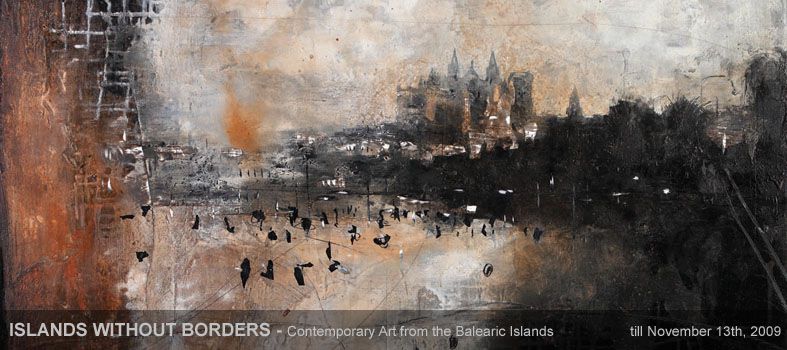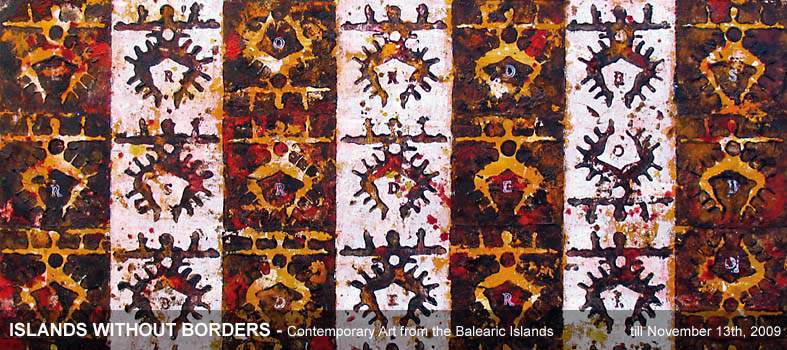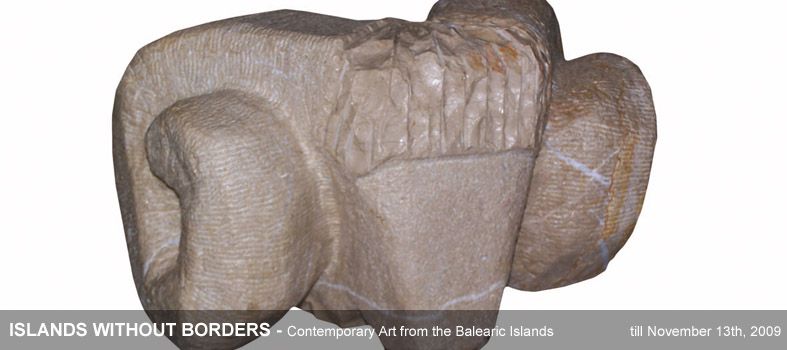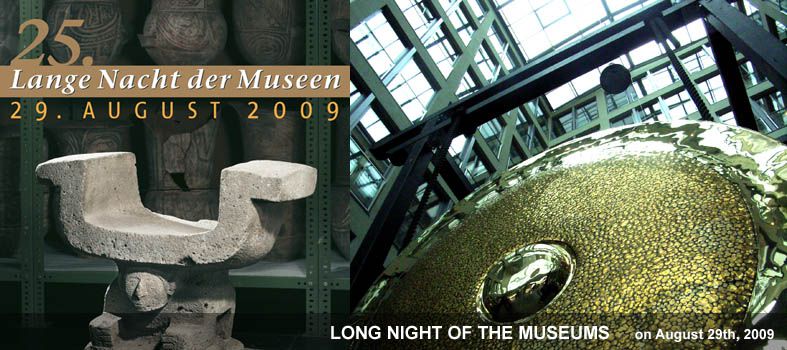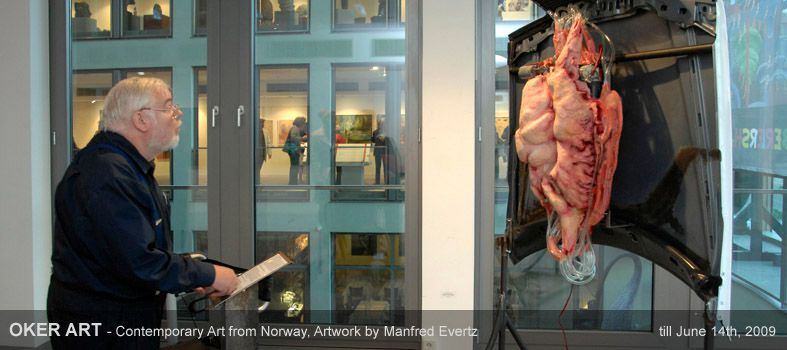
Jorge Azri
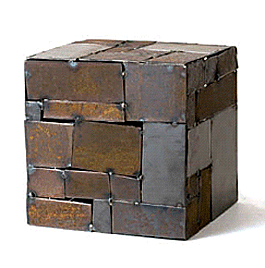
Velcha Velchev

Josep Maria Alaminos
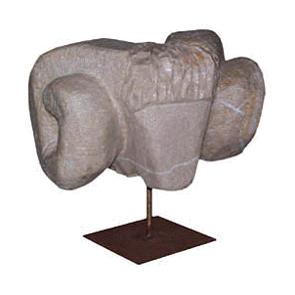
Xavier Llull
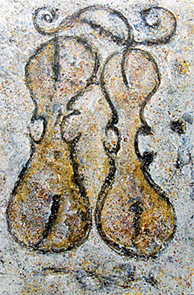
Guillem Crespà Alemany
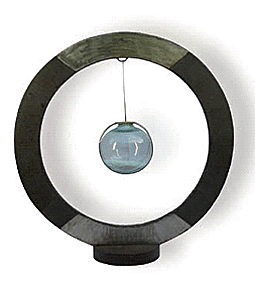
Toni Mandilego
ISLANDS WITHOUT BORDERS - Contemporary Art from the Balearic Islands
October 23rd - November 13th, 2009
ASSISTANCE: Institut d'Estudis Baleà rics, Institut Ramón Llull,
CURATOR: Suzana Mihalic,
ARTISTS: Josep Maria Alaminos, Jorge Azri, Guillem Crespà Alemany, Xavier Llull, Toni Mandilego, Velcha Velchev
The cultural prosperity of a country, an Autonomous Region or even a city derives from a multitude of influences from history and the presence of different cultures, it develops from the continuous dialogue and the comparison of native and foreign elements - the art of the Balearic Islands is one of the best examples. Islands without borders is an exhibition with the aim to take the Balearic art into the world. Six artists, some of them natives of the Balears, others from other Autonomous Regions or from abroad, who have chosen the Balears as their home, work place and source of inspiration, are contributing to this exhibition: Josep MarÃa Alaminos, Jorge Azri, Guillem Crespà Alemany, Xavier Llull, Toni Mandilego and Velcha Velchev. As the title of the exhibition indicates, the art has no limits, however it is committed to the globalised world we are living in, it has no boundaries, it is open in many directions. Neither the location nor the date of this exhibition in the city of Berlin were chosen at random. It was the intention of the artists to contribute with their works to the celebrations on the occasion of the 20th Anniversary of the Fall of the Wall to bear witness of their will to support a world without boundaries, in an ideological sense as well as in reality. The paintings and sculptures were selected as a work of harmonious coexistence, at the same time each work is an individual piece of art through the language chosen by its artist and through their personal and professional history as well as their projection of the future.
In the work of the Syrian artist Jorge Azri, who has been living on Majorca for more than twenty years, the urban landscapes of the cities Berlin and Palma amalgamate at the same time as they break apart in an abstract way, using various forms in different works. He frequently applies the red border and the transfer technique which help him to break with the chromatic palette and with the tradition. The cubes which are painted on every side, allow the beholder to leave the picture, to invade the physical space and to broaden the perspective, visually as well as conceptually. Maintaining the chromatic line and the theme the cubes are a continuation of the picture, transmitting an atmosphere of the melancholy and poetry of big cities.
The artist from Serbia, Velcha Velchev, who has been living on Majorca since 1991, submerges into his inner self to distance himself from the well-known and to surpass boundaries, to explore new and unknown territories and to expose his sculptures to an everlasting evolution. He turns materials as hard as iron, lead and zinc, initially destined for industrial use, into almost pictorial compositions, challenging and breaking boundaries between sculpture and painting. The concepts such as movement, colour, light, time and space are the concepts where his spacious sculptures find their base, trying to find a formal balance between real space and illusion, open for new interpretations.
The paintings and the sculptures of the Granada born artist Josep Maria Alaminos, who had been living on Majorca since 1972, embrace the human figure as a person open for the dialogue and the understanding, who is capable to surpass all the boundaries, including the ones in ones own mind. The paintings are self-explanatory through their titles s.a. words, borders, cosmos or minds, and as well through the many symbols included in the artwork. There are persons in the process of opening their arms and silhouettes of a human head representing the mind, the reflection. Featuring figures in black and white they represent both, the positive and the negative, which complement and need each other in order to exist.
The sculptures which the Palma born artist Xavier Llull has been chiselling for many years radiate an archaic strength. Although he does not relinqish modern techniques, his methods of sculpturing are rather primitive, like they have been carried out in ancient times. At first there is the idea in his mind, then he experiments with all kinds of natural stones. In his work he combines the figurative with the abstract whereby he gets inspired by Mediterranean and African civilizations. His inspiration for his longish sculptures come from the masks of the Fang tribes in Gabun which already captivated the early avant-garde of the XX. century.
The pictures and the sculptures seem to become alive in the work of the Majorcan artist Guillem Crespà Alemany. He interest lies in presenting the object like he sees it, in order to design its figurative form later on. Through the thin acrylic and Japonese ink the various instruments s.a. a grand piano, violines or a violoncello lose their stiffness and heaviness, turning into fragile objects with gentle curves. Through dripping his strokes of brush are blessed with a certain airiness, applied on canvas or paper. His iron sculptures follow the same pattern as he turns their hard and cold metal into objects with gentle and curved lines, though very dynamic.
The Majorcan painter and sculptor Toni Mandilego is searching for new ways of expression to amalgamate sculpture with abstract painting, so rich in elements that it offers unlimited possibilities. He explores the light on materials which harmonize with each other s.a. iron, stone, glass, steel or wood. He is an alchemist who is capable of uniting opposite elements. Fascinated by the subtlety of the curve and the force of a straight line, he introduces elements of sculpture to the painting and vice versa. His interest in architecture shows in the definition of the continuity among the 3 dimensions and the surface, creating flat sculptures and almost threedimensional pictures.
